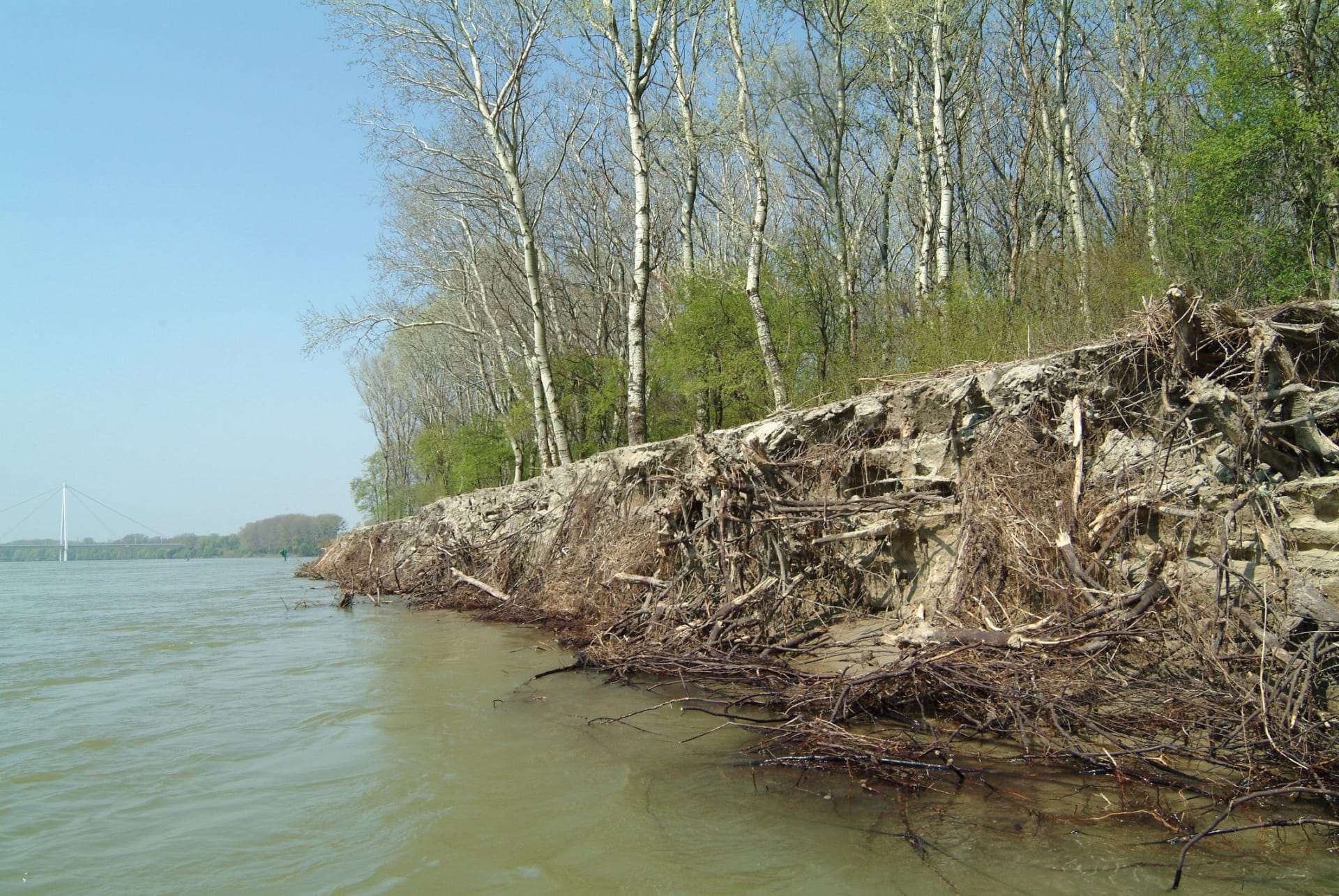

This comprises the arms of the Danube, and a series of its more important streamlets and channels. Over one million individual birds (swans, wild ducks, coots, etc.) winter here. There are over 320 species of birds found in the delta during summer, of which 166 are hatching species and 159 are migratory. Situated on major migratory routes, and providing adequate conditions for nesting and hatching, the Danube Delta is a magnet for birds from six major ecoregions of the world, including the Mongolian, Arctic and Siberian. Musura Gulf, north of Sulina, and Saint George Gulf are considered the most representative of this type of ecosystem.

At the contact between freshwater and sea water, some special physical, chemical and biological processes take place, which have led biologists to consider this area as a very different ecosystem called beforedelta. Between the aquatic and terrestrial environments is interposed a swampy, easily flooded strip of original flora and fauna, with means of adaptation to water or land, depending on the season or hydrological regime. It hosts 23 natural ecosystems, but due to the extent of wetlands an aquatic environment is prevalent a terrestrial environment is also present on the higher grounds of the continental levees, where xerophile ecosystems have developed.
#RIVE DANUBE FULL#
As a young region in full process of consolidation, the Danube Delta represents a very favourable place for the development of highly diverse flora and fauna, unique in Europe, with numerous rare species. The Danube Delta falls within the Pannonian steppe ecosystem of eastern Europe, with Mediterranean influences. Its alluvium has led to the creation, beginning in 1897, of the Sacalin Islands, which today measure 19 km in length. Sfântul Gheorghe ( Saint George in English), in the south, is the oldest and most sparsely populated. Because of the alluvium deposited at its mouth, a channel gradually advancing into the sea (presently it has 10 km) was built in order to protect navigation.

At its mouth is located the main port and a single settlement with urban characteristics of the Romanian part of the delta. Sulina, the central and thus the shortest arm, which consequently led to its extensive use for traffic and severe transformation. At the mouths of each channel gradual formation of new land takes place, as the delta continues to expand.Ĭhilia, in the north, the longest, youngest, and most vigorous, with two secondary internal deltas and one microdelta in full process of formation at its mouth (to Ukraine). The last two branches form the Tulcea channel, which continues as a single body for several kilometers after the separation from the Chilia. The Danube branches into three main distributaries into the delta, Chilia, Sulina, and Sfântul Gheorghe (Saint George). The largest lakes are lakes Dranov (21.7 km 2), Roșu (14.5 km 2) and Gorgova (13.8 km 2).ĭanube Delta – Dalmatian pelican and great cormorant Distributaries of the Danube Dunes on the most extensive strand plains of the delta (Letea and Caraorman strand plains) stand higher (12.4 m and 7 m respectively). The average altitude is 0.52 m, with 20% of the territory below sea level, and more than half not exceeding one meter in altitude. It consists of an intricate pattern of marshes, channels, streamlets and lakes. However, construction of a dense network of shallow channels in the delta over the same period, a sedimentation enhancing strategy, attenuated the deficit on the delta plain but increased erosion along the coast The Danube Delta is a low alluvial plain, mostly covered by wetlands and water. Īt present, the delta suffers from a large sediment deficit, after the construction of dams on the Danube and its tributaries in the later half of the 20th century. Probably 40 percent of the Delta was built in the last 1000 years.

Geologist Liviu Giosan told The New York Times: Much of the alluvium in the delta and major expansion of its surface area in the form of lobes resulted from soil erosion associated with the clearing of forests in the Danube basin during the 1st and 2nd millennium. Several other internal lobes were constructed in the lakes and lagoons bordering the Danube Delta to the north (Chilia I and II) and toward the south (Dunavatz). George II (0 BC–present) and the Chilia or Kilia (1600 CE–present). Upon filling the bay with sediment, the delta advanced outside this barrier-blocked estuary after 3500 BCE, building several successive lobes: the St. A sandy barrier blocked the Danube bay where the river initially built its delta. The modern Danube Delta began to form after 4000 BCE in a bay of the Black Sea when the sea rose to its present level. Historical evolution of the Danube Delta (AD 1 – 2015)


 0 kommentar(er)
0 kommentar(er)
